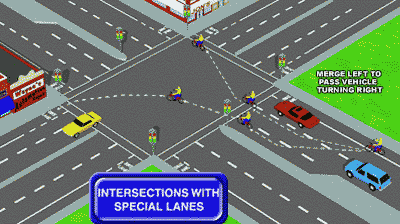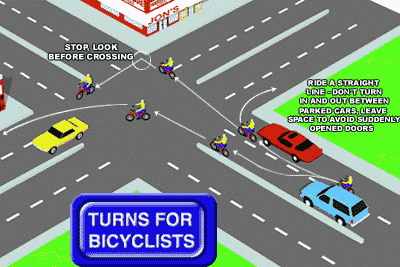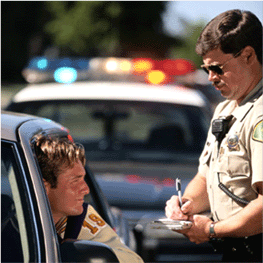Cal-Driver-Ed.Com |
|
California's Home Study Driver Education Class |
To easily find this site again, hit Ctrl+D, or drag this link: Cal-Driver-Ed to your Favorites.
| Log-In | Driver Education | Driver Training | DMV Requirements | FAQs | Compare | Contact Us |
|
The California DMV Driver Handbook |
|||||||
Some vehicles are not designed to keep up with the speed of traffic. Look for these vehicles and adjust your speed before you reach them. Farm tractors, animal-drawn carts, and road maintenance vehicles usually travel 25 mph or less. Slow moving vehicles have an orange triangle on the back. It looks like this sign.
Also, be aware that large trucks and small, underpowered cars lose speed on long or steep hills and they take longer to get up to speed when entering traffic.
Certain other types of slow moving motorized vehicles (such as wheelchairs, scooters and golf carts) may legally operate on public roads. Adjust your speed accordingly. Horse-drawn vehicles and riders of horses or other animals are entitled to share the road with you. It is a traffic offense to scare horses or stampede livestock. Slow down or stop, if necessary, and when requested to do so by the riders or herders. Motorcyclists have the same rights and responsibilities as automobile drivers. While everyone must follow the same traffic laws, motorcyclists face unusual dangers because motorcycles are hard to see and require exceptional handling ability. Because they are hard to see, many motorcycles keep their headlight on, even during daylight hours. Here is what you can do to share the road safely with motorcyclists:
Bicycle riders (cyclists) on public streets have the same rights and responsibilities as automobile drivers. Cyclists are part of the normal traffic flow and are entitled to share the road with other drivers. Here are some critical points for drivers and cyclists to remember:

|
|||||||
|
Our Driver Education Course is Accepted by the California DMV View Our California DMV Verification Letter Sample DMV Driver Education Certificate of Completion  "Cal-Driver-Ed is a pioneer in the field of online driver education. Over 80,000 California teenagers have taken their courses and are driving today." "I recommend Cal-Driver-Ed for home study driver education." The following quotes are excerpts from a California DMV Study on the Effectiveness of Home-Study Driver Education (PDF) dated April 2003: "Home-study students performed just as well or better than classroom students ... " "Home-study courses may also have the additional benefit of increasing parental involvement in their teen's learning process, which has been shown to be an important factor ..." |
|
Cal Driver Ed is proud
|
|
Already Have Your License? Traffic school will help keep your auto insurance costs lower if you receive a traffic ticket. Every licensed California Driver must have auto insurance to drive a vehicle in California. Proof of insurance must be provided to the California DMV when you obtain your drivers license (not your learners permit). Proof of auto insurance must also be provided to DMV when you register or renew the license on a vehicle you own. |







